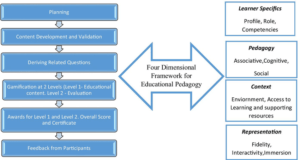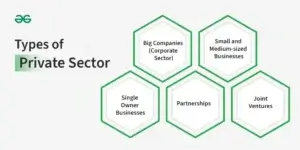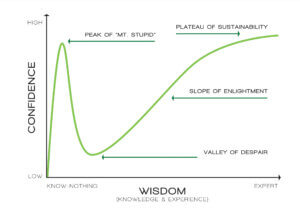The Rise of Digital Literacy in Rural Pakistan: A Success Story
The Rise of Digital Literacy in Rural Pakistan: A Success Story

Introduction
The significance of digital literacy in today’s more interconnected world cannot be overstated. Education now requires students to be able to access, comprehend, and use the digital environment. economic growth and general social welfare Pakistan’s rural communities are beginning to fall behind while metropolitan infrastructure is quickly adjusting to the digital era.
But in rural Pakistan Digital literacy has increased significantly over the past decade. Increase the potential of the community improve access to education and stimulate economic growth
This work explores the variables that influence this change. The impact of greater power and personal responsibility and the complex issues that continue to lead to closing the digital divide.
-
Digital divide in Pakistan.
Historically, rural Pakistan has faced a situation that demands huge access to infrastructure such as energy, health, and education. Digital capabilities are still largely limited to urban areas such as Karachi, Lahore, and Islamabad. For a long time, the virtual differences between urban and rural populations were noticeably blurred. According to the Pakistan Bureau of Statistics (PBS), from 2017 onwards, only 22% of Pakistan’s rural population had internet access, compared to 56% in urban areas.
There are a number of reasons for this difference:
– **Limited Internet penetration**: The coverage for broadband and mobile internet services is limited in the rural regions.
– **Low level of education**: Illiteracy and poor quality of education hamper the development of a moral platform in the people.
Economic inequality : The poor farming system makes families unable to acquire smartphones, computer systems, or other devices; the cost of a tablet is difficult
However, this narrative has notably changed for the past years. This is because several efforts are underway in increasing the virtual literacy among the agricultural population.
2. Governmental Efforts: Factors Influencing Digital Literacy

The Pakistani government has had great success encouraging virtual literacy in the rural areas. Among the significant projects are:
a) The Digital Pakistan Vision
The **Digital Pakistan Vision**, launched back in 2019 and supported by the Ministry of IT and Telecommunication, aims to transform Pakistan into a knowledge-based economy. It focuses upon cheap net access, digital literacy programs, and a trained workforce. The government has strived to align with big tech brands, such as Google and Microsoft as well as Huawei, to develop education in digital skills, especially for rural communities.
b) Universal Service Fund (USF)
One of the few gears used by the authorities to enhance digital inclusion is the **Universal Service Fund (USF)**. Though it was established as far back as 2006, the main objective of the USF is to bridge the virtual divide by using the extending ICT services of improving underserved areas. The USF has taken a key position in expanding broadband infrastructure in rural and far-flung regions, thereby making thousands and thousands of people embrace the internet.
c) TeleSchool and e-Learning Platforms
During the COVID-19 pandemic, the government implemented **TeleSchool**, where college students who were not able to attend college schools because of the lockdown were instead offered an opportunity to learn from home. Initially targeting the urban centers, the program was soon extended to other rural areas, exposing children to virtual school for the very first time. The success of TeleSchool led to more financing put on e-learning platforms, more so those based on mobile phones.
3. Private Sector and Non-Governmental Effort

In fact, what has been observed is that it was private companies, NGOs, and international companies that spearheaded progress in rural Pakistan through digital literacy, above and beyond packages offered by the government.
Telenor and Jazz Digital Literacy Programs

Leading telecommunication networks like Telenor and Jazz have shared a full-size function in putting forth virtual literacy. **Telenor Pakistan’s “iChamp” project focused on rural college youth and provided them with capsules and digital training. The campaign has reached over seven hundred,000 students in 76 districts which will engage themselves with virtual resources as well as online learning tools.
Similarly, **Jazz’s “Smart Schools” program**, in collaboration with the Federal Directorate of Education, brought e-classrooms to far-flung areas, instead of using traditional chalk and blackboards, as interactive modules for studies. To this date, the Smart Schools program has trained thousands of teachers in virtual tools used in education and engaged nearly 20,000 students in disadvantaged areas.
b) Pakistan Code
**Code for Pakistan is a company that focuses on non-profit civic innovation by using technology. To date, it has organized several projects oriented toward the teaching of rural children how to code and basic computer skills. Its “Women in Tech” application is the most fruitful initiative toward providing women in rural communities with IT skills to work as freelancers and become economically independent.
c) International Development Programs
Major organizations, such as **UNESCO**, **USAID**, and **DFID**, have successfully channeled great funding of virtual literacy packages in Pakistan. For instance, **USAID’s Digital Literacy Initiative** has reached thousands of schools in rural areas, helping thereby to arm the college students and the teachers with the virtual skills needed for modern life. In like manner, UNESCO’s **”Enhancing Access to ICTs for Education”** software attempted to enhance access to the technology by rural schools.
4. Effect on Knowledge

Education has seen significant advancements as a result of the e-literacy boom in Pakistan’s rural areas. We now have YouTube channels, educational software, and e-learning systems available for children who live in remote places and previously had limited access to high-quality education. An abundance of digital materials is now available to institutions that were previously unable to access basic facilities like technology labs or libraries.
a) The EdTech Revolution
The EdTech industry, particularly in Pakistan, has seen that rapid growth in the last few years has mostly happened through increased virtual literacy. Startups such as **Sabaq** and **EdKasa** have transformed academic applications for rural students, providing courses that are much less in local languages and, in particular, specially customized for low-bandwidth areas. This is democratizing the kind of access to quality schooling that rural students can enjoy at par with children from other regions of the country.
b) Gaining Ground for Women through Education
In many rural areas, cultural norms have confined the mobility of ladies and young ladies from attending school. However, digital literacy and cell mastering enable girls to gain entry into education from home. Such exposure has resulted in increased girl participation within education programs and cascaded to enhancing gender equality in rural Pakistan.
4. Economic Empowerment through Digital Skills
Digital literacy not only increases access to education but also yields new sources of revenues in rural communities. With the emergence of **e-commerce**, **freelancing**, and **off-site work,, persons in remote villages can now connect to the entire global market and get work for themselves.
a) Freelancing and Remote Work
Pakistan ranks among the international locations that top the global lists. The freelance financial system has spread out from city centers to rural areas. **DigiSkills** and **E-Rozgaar** programs initiated by government authorities provide free courses in freelancing, virtual marketing, and picture design so that teenagers can work from afar for global clients.
b) E-commerce Platforms
E-commerce platforms like **Daraz**, **FoodPanda**, and **OLX** have reached the rural areas, where neighborhood crafts persons and farmers can sell their produce through online channels. Such an online marketplace has allowed rural entrepreneurship to prosper in ways that conventional markets would not have.
6. Challenges and the Way Forward

Although there has been tremendous growth in terms of virtual literacy in rural Pakistan, still there are many challenging issues:
Infrastructure Gaps: Still, the majority of such remote locations do not have guaranteed internet access, which limits the general scope of virtual works.
Affordability: Even though it has become cheaper to connect to smartphones and information applications, many families of the poor cannot afford this at all.
Gender Disparities: In some conservative rural regions, cultural practices are restricting girls’ entry to virtual means of learning or tools.
Ongoing investment in broadband infrastructure, low-cost generation, and network-based wholly virtual literacy programs can also address those concerns. Moreover, targeted projects have to be initiated to reduce the disparities based on gender and assist the marginalized agencies to promote all-inclusive virtual development.
Conclusion
The rapid push of virtual literacy in rural Pakistan is, in my viewpoint, an achievement story within the making. While there’s certainly still plenty of work to be done, recent years have remarkable progress. From authorities-led initiatives to personal zone contributions and worldwide resource, digital literacy is empowering rural Pakistanis with the improvement of their training, increasing economic possibilities, and participating extra absolutely within the digital age.
The adventure in the direction of complete virtual inclusion would require continued collaboration between the public and private sectors, but the impact on rural communities is already visible. With the right investments and regulations, completely rural Pakistan can fully be embraced with the opportunities offered through the digital revolution.
